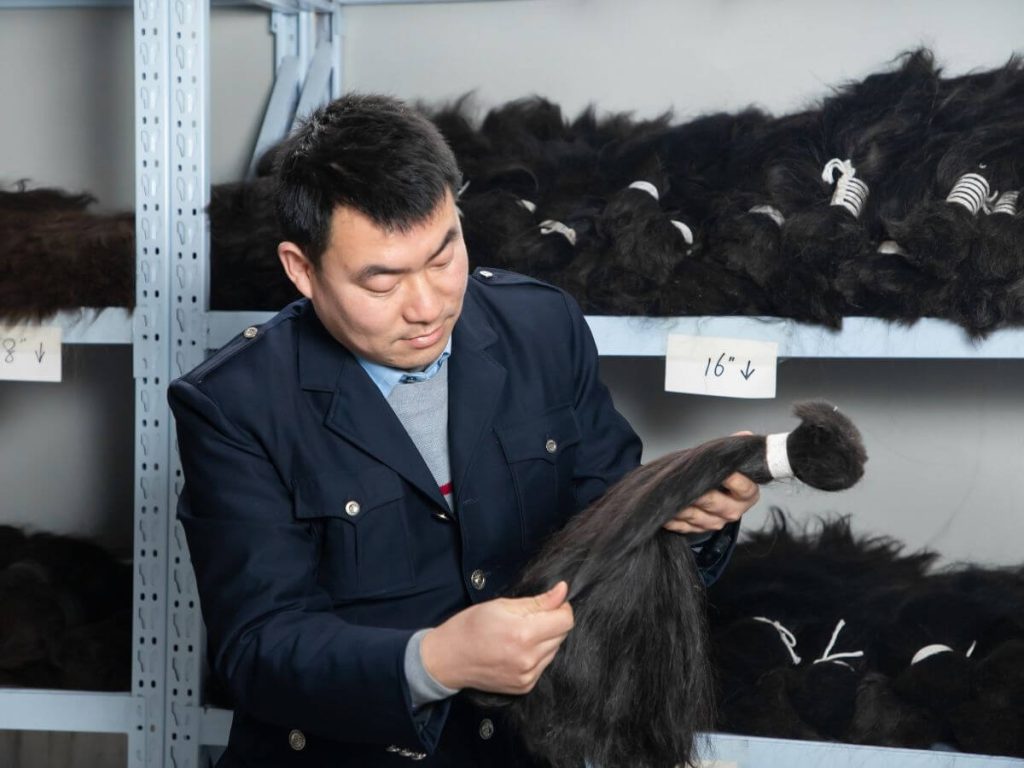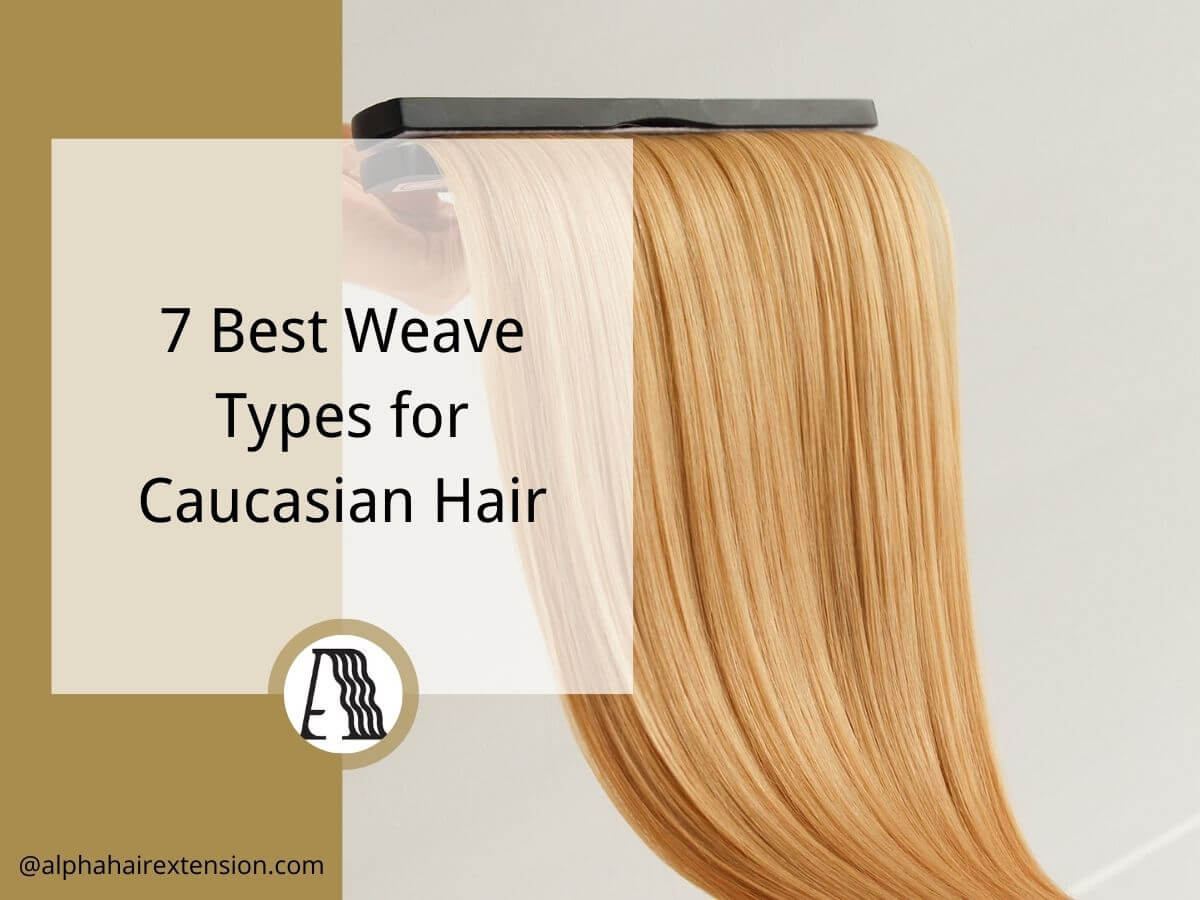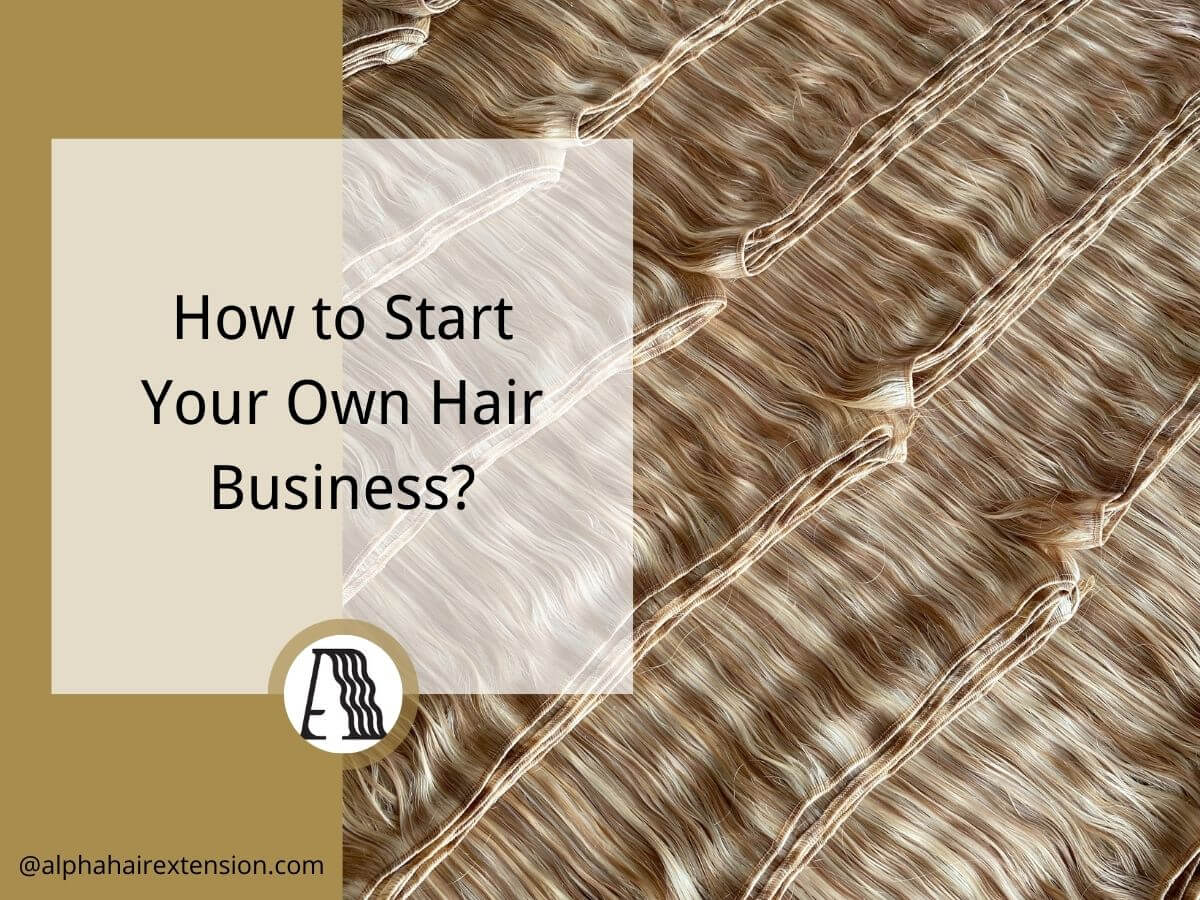I still remember the struggle of finding a reliable human hair vendor when I started my own brand. The first few orders were disaster—tangled, low-quality bundles that hurt my reputation before I even got started.
That’s when I realized that selling human hair isn’t just about having products. It’s about sourcing quality, branding right, and marketing smart.
After years of trial and error, I figured out how to create a profitable hair business without the usual headaches. This guide is built on real experience, not just theory.
Here you’ll get a step-by-step breakdown, from sourcing to selling, so you can skip the mistakes and go straight to making sales. Whether you’re launching online or in a salon, you’ll find exactly what you need.
Let’s get started!
Step#1 Research the Market
Before diving into the business, take time to understand the market. I remember when I first started looking into selling human hair, I assumed all hair was the same. I quickly learned that wasn’t the case. The quality, texture, and origin of hair all impact its value and appeal to customers. Your research should focus on:
Knowing Your Target Audience
Not all hair buyers are the same. And as a business owner, you’re not just selling to anyone—you’re selling to a specific group of people. Ask yourself:
- Are you targeting salon owners who need bulk orders?
- Are you selling to beauty supply stores and looking for wholesale options?
- Or are you creating a luxury hair brand with high-end clientele?
Each group has different needs, different budgets, and different expectations. You need to be clear on who you’re selling to before making any decisions.
Studying Your Competition
Here’s the truth: Your competitors have already done the hard work. They’ve figured out what’s selling, how to price it, and who’s buying.
Instead of guessing, analyze them.
- Who are the top brands in your niche?
- What’s their pricing strategy?
- How do they market their products?
- What complaints do their customers have? (Check their reviews—goldmine of insight!)
Identifying Market Trends
Human hair is a billion-dollar industry, but not all hair sells equally. Right now, are customers craving raw Vietnamese hair? Or is HD lace the hot trend? Maybe short wigs are dominating because women want convenience.
You have to stay ahead of trends if you want to sell what people want.
How?
- Follow industry influencers on Instagram & TikTok.
- Join hair business forums and Facebook groups.
- Watch salon owners—they know what’s in demand.
The more you know, the better decisions you’ll make.

Step#2 Develop a Business Plan
You wouldn’t build a house without a blueprint, right?
Your hair business is no different. Without a solid business plan, you’ll waste time, money, and energy chasing random ideas—only to end up frustrated and stuck. I’ve seen it happen too many times.
A business plan gives you direction. It forces you to think ahead, make smart decisions, and set yourself up for real success.
- Define Your Business Model: Before anything else, decide how you’ll operate. Each model has pros and cons. Pick one that fits your budget, experience, and goals:
- Wholesale Business: Selling bulk orders to salons, beauty stores, or other businesses.
- E-commerce Store: Selling directly to customers through a website or social media.
- Dropshipping: No inventory; your supplier ships directly to your customers.
- Hybrid Model: A mix of any of the above.
- Choose Your Niche & Unique Selling Proposition (USP): The human hair industry is competitive. If you try to sell everything to everyone, you’ll disappear into the noise. Instead, ask yourself:
- What makes my brand different?
- Who do I serve best? (Salons? High-end clients? Budget-conscious buyers?)
- What hair products will I specialize in? (Raw bundles, HD lace wigs, tape-ins, etc.?)
Example Niches:
- Luxury, high-quality raw hair for professionals
- Affordable bundles for everyday wear
- Trend-focused wigs & extensions for influencers
- Set Realistic Goals & Revenue Targets: Let’s talk numbers because this is a business, not a hobby.
- How much do you need to invest? (Stock, branding, website, etc.)
- How much will you charge per unit?
- How many sales do you need per month to hit your income goal?
Example: If you sell wigs for $250 each, and you want to make $5,000/month, you need to sell 20 wigs per month. Setting clear financial goals helps you plan inventory, pricing, and marketing.
- Identify Your Marketing & Sales Strategy: You could have the best hair in the industry, but if no one knows about your brand, you won’t make sales. So, where will you find and attract customers?
- Instagram & TikTok: Influencer collaborations, video tutorials, and viral content.
- Facebook Ads & Google Ads: Targeted ads to reach potential buyers.
- Website & SEO: A professional e-commerce store that ranks in search engines.
- Salon Partnerships: Selling directly to hairstylists who need quality hair for clients.
- Plan for Logistics & Customer Service: Selling hair isn’t just about getting orders—it’s about fulfilling them smoothly and keeping customers happy.
- Inventory: Will you store stock yourself or use a fulfillment center?
- Shipping: How will you deliver orders? (Fast shipping = better customer experience.)
- Customer Service: What’s your return/exchange policy? How will you handle complaints?

Step#3 Legalize Your Business
Skipping the legal setup is one of the biggest mistakes new business owners make. I get it—dealing with paperwork, taxes, and regulations isn’t as exciting as branding or marketing. But if you don’t set up your business the right way from the start, it could cost you big time down the road.
Let’s break it down step by step, so you can protect your business, your profits, and your brand.
Choose a Business Structure
Your business structure affects how you pay taxes, your legal protection, and your credibility. Here are your main options:
- Sole Proprietorship: The easiest option, but no legal protection. If someone sues your business, your personal assets are at risk.
- Limited Liability Company (LLC): Protects your personal assets, simple to set up, and a great option for small business owners.
- Corporation (S-Corp or C-Corp): Best for larger businesses, but more complex and expensive to maintain.
Register Your Business Name
Your business name is your identity. But if you don’t legally register it, someone else can claim it—forcing you to rebrand and start over. Here’s what you need to do:
- Check for availability: Search your business name in the U.S. Patent and Trademark Office (USPTO) or your local government’s business registry.
- Register it officially: If you’re a sole proprietor, you may need a DBA (Doing Business As). If you have an LLC, your business name is registered automatically when you file your LLC paperwork.
- Trademark it (optional but recommended): If you want exclusive rights to your brand name and logo, file for a trademark. This prevents competitors from copying your name.
Get Your EIN (Employer Identification Number)
An EIN (Employer Identification Number) is like a Social Security number for your business. You need it to:
- Open a business bank account
- File taxes
- Hire employees (if needed)
- Work with wholesale suppliers
How to get it: It’s free and takes minutes to apply on the IRS website.
Apply for Business Licenses & Permits
Every state and country has different rules about selling hair products. To avoid legal trouble, check which licenses and permits you need. Common requirements:
- General Business License: Required in most states/countries to operate legally.
- Reseller Permit (Sales Tax ID): Allows you to buy hair wholesale without paying sales tax.
- Home Business Permit: Needed if you’re running the business from home in some areas.
Where to check: Visit your state’s Secretary of State website or your local small business office.

Step#4 Find Reliable Suppliers
The quality of your hair products can make or break your business. I’ve seen brand owners spend thousands on inventory, only to realize their supplier sent low-quality, shedding, or synthetic-blended hair. Their customers left bad reviews, chargebacks rolled in, and their brand never recovered.
I don’t want that to happen to you.
So let’s go through how to find the best suppliers, avoid scams, and ensure you’re getting top-tier human hair.
Know What to Look for in a Supplier
Not all hair vendors are created equal. Some will promise high-quality hair but send you mixed fibers or low-grade processed hair that doesn’t last. Here’s what you should demand from a supplier:
- 100% Human Hair: No synthetic blends, fillers, or chemical coatings.
- Quality Consistency: Every batch should match in texture, thickness, and durability.
- Tangle-Free, Shed-Free Bundles: Poorly wefted hair will cause customer complaints.
- Transparent Sourcing: Suppliers should disclose where the hair comes from (Vietnamese, Indian, Brazilian, etc.).
Where to Find Reliable Suppliers:
Finding a supplier takes more than a quick Google search. The best vendors don’t always show up on page one of search results. Here are the best ways to locate top-tier hair vendors:
- Industry Trade Shows & Expos: Meet suppliers in person, inspect their products, and negotiate pricing.
- Wholesale Marketplaces: Platforms like Alibaba and Aliexpress have vendors, but you must vet them carefully.
- Supplier Directories & Reviews: Business groups, Facebook communities, and YouTube reviews can lead you to trusted vendors.
- Established Brands & Recommendations: Companies like Blue Elephant have built a reputation for providing consistent, high-quality raw hair to business owners.
Build a Long-Term Relationship
Once you find a great vendor, treat them like a business partner. A strong supplier relationship can lead to:
- Exclusive pricing discounts for bulk orders.
- Faster order processing for loyal customers.
- Custom hair options tailored to your brand.
Communicate regularly, give feedback on orders, and negotiate better terms as your business grows. The best suppliers reward long-term customers with better deals and priority service.

Step#5 Build Your Brand
In a market flooded with hair vendors, branding is what sets you apart. Businesses with great products fail because they look like every other hair seller online. On the other hand, brands with average-quality hair explode in sales because they have a strong identity and know how to attract the right audience.
Your brand is more than just a name or logo—it’s the feeling customers associate with your business. It’s how they recognize you, trust you, and choose your hair products over someone else’s. Let’s break down how to build a brand that stands out:
Choose a Memorable Business Name
Secure your business name as a domain (website URL) and social media handles before finalizing it. Your name should be:
- Easy to Remember: Avoid long, complicated names.
- Relevant to the Industry: It should hint at beauty, luxury, or hair-related terms.
- Unique: Search Google, social media, and trademarks to make sure no one else is using it.
Design a Strong Logo & Brand Identity
Your logo is the first thing people will see. It should look professional, clean, and memorable. Key elements of a strong brand identity:
- Logo: Keep it sleek and modern. Invest in a graphic designer or use a professional tool like Canva or Adobe Illustrator.
- Brand Colors: Choose 2 to 4 colors that reflect your brand’s personality. Luxury brands often use gold, black, white, or nude tones.
- Typography: Pick easy-to-read fonts for a consistent look across your website and marketing materials.
Define Your Brand’s Unique Selling Proposition
Why should customers choose your hair over the competition? Your USP is what makes your brand different, and it should be clear in everything you do. Examples of strong USPs:
- Luxury & Exclusivity: “We provide premium, raw human hair sourced directly from single donors.”
- Affordable & High-Quality: “Salon-quality hair at budget-friendly prices.”
- Specialized Product Line: “The go-to brand for glueless, beginner-friendly wigs.”
Creating a Professional Website
Your website is your digital storefront. If it looks unprofessional or cheap, people won’t trust your brand. Must-haves for a high-converting website:
- Professional photos & videos: Show the hair from different angles, in different lighting.
- Clear product descriptions: Include hair origin, texture, density, length, and maintenance tips.
- Easy checkout process: Accept multiple payment methods (credit cards, PayPal, Afterpay).
- Customer reviews & testimonials: Build credibility by showcasing real experiences.
Best platforms for e-commerce:
- Shopify (best for ease of use)
- WooCommerce (best for WordPress users)
- Wix (good for small businesses on a budget)

Step#6 Establish Pricing and Inventory Management
Setting the right price for your hair products isn’t just about covering costs—it’s about maximizing profit, staying competitive, and attracting the right customers. Get it wrong, and you’ll either scare away buyers with high prices or lose money by charging too little. Let’s break down how to price your products for profitability and manage inventory so you never lose a sale:
Calculate Your Total Costs
Before setting prices, you need to know exactly how much it costs to sell each unit. Consider these expenses:
- Cost of Goods Sold (COGS): The price you pay for the hair, including shipping and customs fees.
- Packaging Costs: Custom boxes, satin bags, thank-you cards.
- Shipping Fees: If you offer free shipping, this needs to be factored in.
- Payment Processing Fees: PayPal, Stripe, and Afterpay take a percentage of each sale.
- Marketing Expenses: Facebook ads, influencer collaborations, and website hosting.
Set a Profitable Pricing Strategy
Once you know your costs, you need a pricing strategy that ensures profit while staying competitive. Common pricing methods:
- Keystone Pricing: Doubling your cost (e.g., if a bundle costs you $50, you sell it for $100).
- Luxury Pricing: Higher markups for premium positioning (e.g., $50 cost → $150 selling price).
- Competitive Pricing: Research what other brands charge and position yourself accordingly.
Example Pricing Calculation:
If your COGS is $50, and you want at least a 70% profit margin, the formula would be:
- $$50 (COGS) ÷ (1 – 0.70) =$$166.67 (Retail price)
This ensures every sale covers your costs and leaves room for growth.
Offer Smart Pricing Options
Your pricing model should make it easy for customers to spend more.
- Bundle Deals: Sell 3-bundle sets instead of single bundles to increase order value.
- Upsells & Add-ons: Offer lace closures, wig caps, or styling products at checkout.
- Buy Now, Pay Later (BNPL): Accept Afterpay or Klarna to make high-ticket items more affordable.

Step#7 Launch Your Business
You’ve done the groundwork—market research, business planning, branding, supplier selection, pricing, and inventory setup. Now, it’s time for the moment that separates aspiring entrepreneurs from real business owners—launching your human hair business.
A strong launch creates momentum, attracts customers, and sets the tone for your brand. But launching without a strategy? That’s how businesses end up sitting on unsold inventory. Let’s go step by step to ensure your launch drives traffic, gets sales, and builds long-term brand success:
Finalize Your Website
Your website is your business foundation. If it’s not professional and easy to navigate, you’ll lose potential buyers. Checklist for a high-converting website:
- Clear Branding: Logo, brand colors, and professional product photos.
- SEO-Optimized Product Listings: Detailed descriptions with keywords (e.g., “100% Raw Vietnamese Hair”).
- Mobile-Friendly Design: Over 80% of customers shop on their phones—your site must work smoothly on mobile.
- Easy Checkout Process: Accept credit cards, PayPal, Afterpay/Klarna for installment payments.
If you’re selling through a physical location (like a salon or retail store), make sure your store layout, signage, and promotional materials are in place before launch.
Build Pre-Launch Buzz
One of the biggest mistakes business owners make? They launch without an audience.
Before your launch date, start marketing and building anticipation. Ways to create buzz before launching:
- Social Media Teasers: Post sneak peeks of your hair products, behind-the-scenes content, and “coming soon” announcements.
- Exclusive Early Access List: Offer discounts or VIP access to customers who sign up for your email/SMS list.
- Influencer Collaborations: Send free hair to hairstylists, beauty influencers, or micro-influencers in exchange for reviews and exposure.
- Giveaways & Contests: Engage your audience by offering free hair bundles or wigs in exchange for shares and follows.

Step#8 Monitor and Grow Your Business
Launching your business is just the beginning. The real challenge? Keeping it profitable and growing it into a long-term, sustainable brand.
I’ve seen too many entrepreneurs hit their first few sales and then get stuck. They stop analyzing what’s working, fail to adjust their strategies, and eventually lose momentum. Let’s break down exactly how to monitor and scale your hair business so you don’t just survive—you thrive.
Track Your Sales & Business Metrics
If you don’t know your numbers, you don’t know your business. You need to track key performance indicators (KPIs) to see what’s working and what needs fixing. Key metrics to monitor:
- Revenue & Profit Margins: Are you actually making money, or just covering costs?
- Best-Selling Products: Which hair types, textures, or lengths sell the most?
- Customer Acquisition Cost (CAC): How much does it cost to get a new customer through ads or marketing?
- Conversion Rate: How many website visitors turn into paying customers?
Use Google Analytics, Shopify Reports, or Facebook Ad Manager to track these numbers and adjust your strategy accordingly.
Improve & Automate Your Customer Service
A business that delivers top-notch customer service builds a loyal customer base that keeps coming back. Ways to enhance customer service:
- Automate FAQs & Order Tracking: Use chatbots or an FAQ page to answer common questions.
- Fast Response Time: Reply to DMs, emails, and order inquiries within 24 hours.
- Flexible Return & Exchange Policy: A clear, hassle-free policy builds trust.
- Offer Personalized Recommendations: Suggest products based on past purchases.
Happy customers turn into repeat buyers and brand advocates.
Conclusion
When I first started, I had no idea what I was doing. I wasted money on bad suppliers, underpriced my products, and struggled to find customers.
But once I put the right systems in place—research, branding, pricing, marketing, and scaling—everything changed.
Now, you have the exact roadmap I wish I had when I started. The only thing left? Taking action. Your dream business won’t build itself.
So, what’s stopping you? Start today, refine as you go, and create the hair brand you’ve always envisioned.
Need help? Contact us today! Let’s turn your vision into reality.
Explore More Helpful Resources
If you’re looking for more insights, we’ve put together a list of helpful articles that you might enjoy:
Still haven’t found what you’re looking for? Don’t hesitate to contact us. We’re available around the clock to assist you.







